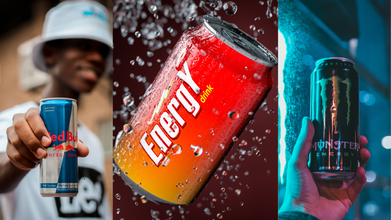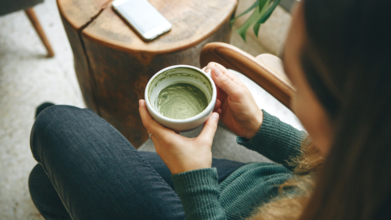- Health Conditions A-Z
- Health & Wellness
- Nutrition
- Fitness
- Health News
- Ayurveda
- Videos
- Medicine A-Z
- Parenting
- Web Stories
Forget Calorie Counting: This Simple Food Swap Doubles Weight Loss, Says New Study

Credits: Canva
Some ultra‑processed foods (UPFs)—like fruit-and-nut bars or plant‑based milks—look healthy on the surface. They often boast reduced sugar, salt, and fat, and meet nutritional guidelines. But a new study from University College London (Nature Medicine, August 2025) shows that even these “cleaned-up” UPFs don’t deliver the same weight-loss bang as home-cooked minimal foods. It suggests that how food is processed can be just as important as what’s in it.
Researchers designed a randomized crossover trial—often hard to pull off outside a lab. Fifty-five overweight participants were fed two eight-week diets in random order: one based on minimally processed foods (MPFs) like homemade cottage pie, oats, and fresh vegetables, and the other based on nutritionally matched UPFs—commercial ready meals, breakfast bars, and packaged wraps. Both diets followed the UK’s Eatwell Guide, ensuring fairness in nutrients. Participants ate freely—no calorie limits—and yet the results were clear:
- On the MPF diet, participants lost an average of 2.06% of their body weight (equating to roughly a 290-calorie daily deficit)
- On the UPF diet, weight loss averaged 1.05% (about a 120-calorie deficit)
That means the minimally processed group lost nearly twice as much weight, even without trying to eat less
Hidden Benefits of Minimally Processed Foods
Weight loss is one thing—but what about where that weight comes from? Participants on the MPF diet showed reductions in fat mass and body water without losing muscle. Those on UPFs lost weight too—but less of it was fat. Plus, the minimally processed group reported significantly stronger control over food cravings, especially for savory foods, and improved resistance to their top food triggers.
Over a year, the researchers project men on the MPF diet could lose up to 13% of body weight, women 9%—compared to just 4–5% for UPFs.
The significance here isn’t just about weight loss. It’s proof that even nutritionally balanced UPFs—those that tick fat, salt, fiber, and sugar boxes—can perform worse than minimally processed options. Researchers and public health experts say this challenges the assumption that all foods meeting dietary guidelines are equal.
Many UPFs are designed to be hyper-palatable, soft, and calorie-dense—and that makes them easier to overeat. Even with health claims or reformulated recipes, the structure and processing level of food influence our intake and satisfaction.
How Minimal Processed Foods Have Maximum Impact On Weight Loss?
What counts as “minimally processed”? Think home-cooked meals made from whole ingredients—oats soaked in milk and fruit, grilled fish with steamed veggies, or overnight oats with spices. These foods often take longer to eat, are more satisfying, and allow the body to register fullness more effectively. By contrast, a ready-made chicken tikka wrap or packaged cottage pie may look similar on labels—but they don’t offer the same satiety or fat loss benefit.
Experts like Professor Chris van Tulleken emphasize the system-level impact: global food environments are saturated with cheap, processed options marketed aggressively. This study shows that focusing only on fats, salts, or nutrients isn’t enough. We must also consider processing level.
Policy suggestions include clearer labeling, taxes on highly processed foods, and caring subsidies or support for minimally processed meals—especially for low-income communities where UPFs are most common.
Yes—it’s possible to lose weight on a diet of ultra-processed meals that technically meet healthy-eating guidelines. But the double weight loss advantage of whole, minimally processed meals offers something extra—and it happens without dieting or calorie counting. Over time, this difference builds. Add better fat loss, reduced cravings, and real food that satisfies the senses—and you see why the takeaway is so clear: how food is made matters as much as what’s inside.
Vitamin B6 In Your Favorite Energy Drink Is Making You Jitter

Credits: Canva
Vitamin B6, commonly found in foods like bananas, chickpeas, and poultry, is essential for brain development, immune function, and metabolism. However, increasingly, doctors are seeing a disturbing trend: more Australians are unknowingly suffering nerve damage, migraines, and other serious symptoms after regularly consuming high doses of synthetic vitamin B6, often through energy drinks, multivitamins, and protein powders.
Energy drinks like Red Bull, Monster, Mother, and BSC Energy are under scrutiny for containing significantly more B6 than what’s recommended in a healthy diet.
A standard 250ml can of Red Bull contains 5mg of B6, nearly four times the recommended daily intake of 1.3–1.7mg for adults. BSC Energy's 500ml can goes even further with 10mg of B6, the legal upper limit set by Food Standards Australia New Zealand (FSANZ).
And while a single can won’t push most people into dangerous territory, doctors warn it's the accumulation that matters.
“It’s Not Just One Product”
“There’s no good reason why energy drinks need to have six times the recommended daily intake of B6 in them,” says Alexandra Jones from the George Institute for Global Health, as reported in ABC News. She points out that people often consume these drinks alongside other B6 sources, like breakfast cereals, magnesium tablets, multivitamins, and fortified protein powders, increasing their total intake exponentially.
Pathology labs have reported over 2,700 probable cases of B6 toxicity in Australia just this year, with most cases linked to stacked consumption of various B6-containing products.
Dr Terri-Lynne South, a GP and dietitian, as reported by ABC News, believes these numbers are just the tip of the iceberg. “If an energy drink were sold as a vitamin supplement with 10mg of B6, it would require a warning label,” she points out. Yet many energy drinks bypass this by marketing themselves as beverages, not therapeutic goods.
Case Study: Blackmores and the Warning Signs Ignored
This isn’t the first time vitamin B6 has come under fire. In 2022, Australian supplement giant Blackmores faced mounting criticism, and now a class action investigation, over several of its products allegedly containing dangerously high levels of B6. Health and Me had also previously reported on the same.
ALSO READ: Over-the-Counter Vitamin B6 Linked To Nerve Damage: Hundreds Join Class Action In Australia
Penny Thompson, a 61-year-old from Wollongong, is one of hundreds who reported alarming symptoms, from numbness in the limbs to a paralyzed vocal cord, after prolonged supplement use. “I could not speak, I had to leave my teaching job. My feet felt like they were being stabbed,” she shared with The Sydney Morning Herald.
Despite halting her supplement intake, Penny's symptoms have persisted for years. Her case is now part of a growing legal investigation that may change how supplements and energy drinks are regulated across the country.
What B6 Toxicity Looks Like
Peripheral neuropathy, damage to nerves outside the brain and spinal cord, is the most common result of B6 toxicity. Symptoms may include:
- Burning or tingling in the hands and feet
- Numbness and muscle weakness
- Headaches and dizziness
- Difficulty walking or balance issues
- Gut pain or nausea
These symptoms often develop slowly and are misdiagnosed, delaying treatment and increasing long-term damage.
One man, known as Matthew, began drinking Berocca daily for an energy boost. He later developed extreme burning sensations and nerve pain. His blood tests revealed nearly three times the toxic threshold of B6. “I thought it was just vitamins… I never thought you could poison yourself with it,” he said.
READ MORE: Can Vitamin B6 Deficiency Cause Seizures?
Are Energy Drinks the New Health Hazard?
With B6 levels in food and drinks going largely unchecked for cumulative risk, experts argue that regulators are lagging behind consumer trends.
The Therapeutic Goods Administration (TGA) recently recommended that supplements containing over 50mg of B6 be moved behind pharmacy counters. They’ve also suggested FSANZ re-evaluate the 10mg B6 limit in energy drinks, considering the cumulative exposure from various products.
Still, many in the medical field believe this isn’t enough.
Dr South believes clearer labelling, stronger warnings, and public education are key: “People are inadvertently overdosing… and now we’re starting to see the consequences.”
Energy, at What Cost?
While energy drinks and supplements are often marketed as wellness products, promising more energy, better focus, or immune boosts, their health halo is cracking. The case of B6 toxicity reveals a darker reality: sometimes, more isn’t better.
For healthy individuals without a diagnosed deficiency, experts recommend getting B6 naturally from a balanced diet. Supplements, whether in pill or energy drink form, should be taken only under medical guidance.
Until then, that afternoon pick-me-up may not be as harmless as it seems.
Matcha Might Not Be 'The Best Match' For Your Health Due To This One Lesser-Known Side Effect

Credits: Canva
We’ve all heard the "IT-DRINK" matcha is a superdrink. Celebrities endorse it, wellness influencers swear by it, and your local café likely features at least three matcha-based drinks on the menu. Touted as a powerhouse of antioxidants and a natural energy booster, matcha has earned a loyal following around the world. But here's something hardly anyone is discussing: matcha may be secretly acting against your health—especially if you're getting your iron from plant-based foods.".
Matcha originates from Camellia Sinensis, the same plant that gives us green and black tea. However, unlike its cousins, matcha is shade-grown before harvest and then stone-ground into a fine, jade-colored powder. This growing method boosts chlorophyll and antioxidant content, making it denser in nutrients and polyphenols.
Consuming matcha means ingesting the entire leaf in powdered form, which increases its antioxidant profile significantly. According to studies, matcha's polyphenols, especially catechins such as epigallocatechin gallate (EGCG), are strong antioxidants that suppress inflammation and inhibit oxidative stress. Research indicates that daily consumption can lower heart disease risk, improve brain function, and even boost metabolism.
It sounds like a nutritional dream—but this same high concentration of polyphenols may come with unintended effects.
What Are Matcha’s Hidden Drawbacks?
Here’s the kicker: the polyphenols that make matcha so nutritious can also interfere with iron absorption, particularly non-heme iron, which is the form found in plant-based foods like lentils, leafy greens, legumes, and tofu.
According to nutrition experts, matcha tea can affect iron absorption by binding the non-haem iron found in many plant foods. It contains catechins and tannins—both polyphenols—that bind to iron in the digestive tract, preventing it from being absorbed.
Iron that simply passes through your system, unused. Studies suggest that this interaction can reduce iron absorption by up to 50%, depending on individual biology, what food you’re eating, and the timing of consumption. For meat-eaters, this isn’t usually a big issue—haem iron, the kind found in meat and seafood, is not significantly impacted. But vegetarians, vegans, and those who already struggle with iron levels could be at risk.
Why Vegetarians Should Pay Extra Attention?
Iron deficiency is already one of the most common nutrient deficiencies globally, particularly in women, children, and those following plant-based diets. Symptoms like fatigue, weakness, dizziness, pale skin, and headaches are often brushed off as general tiredness—but may be signs of something deeper.
Consuming large amounts of matcha daily—especially alongside or right after plant-based meals—may worsen or even trigger iron deficiency over time.
If you’ve recently embraced matcha as part of a wellness routine but are also noticing changes in your energy or frequent fatigue, it might be time to take a closer look at your iron intake—and when you’re drinking that matcha latte.
Nutrition experts recommend leaving at least an hour or two between your matcha consumption and iron-rich food. In this way, the binding effect that polyphenols cause on iron can be lessened.
Pairing iron-rich foods with foods rich in vitamin C sources also has the ability to enhance iron intake and stabilize against the effects of polyphenols.
Still, if you’re someone with existing iron concerns, a personal or family history of anemia, or are pregnant, it's wise to discuss your matcha habits with a healthcare provider.
Who Should Be Cautious with Drinking Matcha?
Beyond iron absorption, there are other health considerations when it comes to matcha, particularly in certain groups.
When and How You Drink Matcha Counts?
You don’t have to give up matcha altogether. According to the EFSA (European Food Safety Authority) and data compiled from clinical studies, individuals with the following conditions should use caution:
Pregnancy and breastfeeding: Limited studies exist on high EGCG intake during pregnancy. Some countries cap daily EGCG consumption at 120 mg for pregnant women.Because matcha is a concentrated form, moderation and medical consultation are recommended.
Children: Few studies have assessed safety in children. EGCG consumption in children has been reported as 5–87 mg/day, but long-term effect is not known.
Older adults (65+): Although some clinical trials involved older subjects, stronger studies are required. There is also a possibility of drug interactions in this group.
Individuals with liver problems: More than 800 mg of EGCG per day has been associated with liver toxicity in certain instances. Individuals with a pre-existing liver condition should discuss its use with their doctor prior to ingesting matcha extracts.
Those with high blood pressure or esophageal cancer risk: Certain research has indicated that green tea may raise blood pressure or pose a risk of esophageal cancer when extremely hot.
Matcha is not the villain, it's still a nutrient-rich, antioxidant-filled drink with much to bring to the table. But as with most health fads, it's not a one-size-fits-all solution. Moderation, timing, and customization are necessary.
As a vegetarian, vegan, pregnant woman, or suffering from health conditions such as anemia, liver disease, or hypertension, your matcha behaviors might be in for a tweak. That doesn’t mean cutting it out—it means being intentional.
Speak to a healthcare provider, especially if you’re taking supplements or medications, and consider routine blood work to check iron levels if matcha is a regular part of your diet because in the world of wellness, even something as green and glowing as matcha can have a shadow side.
3 Types of Sugar That Commonly Trigger IBS Symptoms

Credits: Canva
Irritable bowel syndrome (IBS) affects an estimated 12% of the U.S. population, causing symptoms such as abdominal cramps, bloating, diarrhea, and constipation. While some individuals experience only mild discomfort, others find their daily life disrupted by the condition. Despite its prevalence, IBS remains complex, with no single known cause.
Doctors and dietitians increasingly advise patients to focus on identifying and avoiding specific food triggers, particularly sugar.
Why Sugar Can Be a Gut Trigger
When you eat sugar, your small intestine breaks it down using specific enzymes. Once processed, the sugar is absorbed into the bloodstream for energy. But for people with IBS, this process can go awry.
Some may lack sufficient enzymes to digest certain sugars, resulting in digestive distress. Others may have altered gut bacteria or hormonal fluctuations that make their digestive system more sensitive. Not all sugars cause issues for everyone with IBS, so identifying personal triggers is a crucial step in managing the condition.
The Worst Offenders: High FODMAP Sugars
Many sugars that worsen IBS symptoms fall into a category known as high FODMAP foods, short for fermentable oligosaccharides, disaccharides, monosaccharides, and polyols. These are carbohydrates that are poorly absorbed in the small intestine and can ferment in the colon, leading to gas, bloating, and other IBS symptoms.
Sucrose (Table Sugar):
Common in desserts, baked goods, and even savory packaged foods, sucrose is made of glucose and fructose. It’s one of the most frequently used sweeteners and a known trigger for some people with IBS.
Fructose:
Found naturally in fruit and added to many sugary beverages and snacks, fructose is another major culprit. High-fructose fruits like apples, grapes, and pears, along with honey and agave, may worsen symptoms. Safer alternatives include citrus fruits, cantaloupe, and berries.
Lactose:
A sugar found in milk and dairy products, lactose requires the enzyme lactase for digestion. Many adults don’t produce enough lactase, which can lead to lactose intolerance—especially problematic for people with IBS.
Are Sugar Substitutes Any Better?
Many people with IBS turn to sugar-free alternatives, but not all substitutes are safe bets.
Sorbitol and Xylitol, often found in sugar-free gum and candy, are known to trigger abdominal cramps and diarrhea in people with IBS. While stevia may be a safer alternative, more research is needed. Even natural sweeteners like honey or agave should be approached with caution due to their high fructose content.
It’s Not Just Sugar: Other Foods to Watch
Sugar isn’t the only food that may cause trouble. Other common IBS triggers include:
- Beans and lentils
- Cruciferous vegetables (like broccoli and cauliflower)
- Onions and garlic
- Gluten
- Chocolate and spicy foods
- Fried or processed foods
- Caffeine and alcohol
An elimination diet guided by a registered dietitian may help pinpoint which of these are problematic.
Could It Be Sucrose Intolerance?
In some cases, symptoms similar to IBS may actually be caused by congenital sucrase-isomaltase deficiency (CSID), a rare genetic disorder. People with CSID lack the enzymes needed to digest sucrose and maltose, leading to symptoms like bloating and diarrhea immediately after eating sugar-containing foods. This condition is usually diagnosed in childhood and can lead to developmental issues if not managed.
Sweet Solutions for IBS Relief
Living with IBS doesn’t mean you have to completely give up sweets, but moderation and awareness are key. Some people find they can tolerate small amounts of certain sugars without triggering symptoms, while others need to avoid them entirely.
© 2024 Bennett, Coleman & Company Limited

